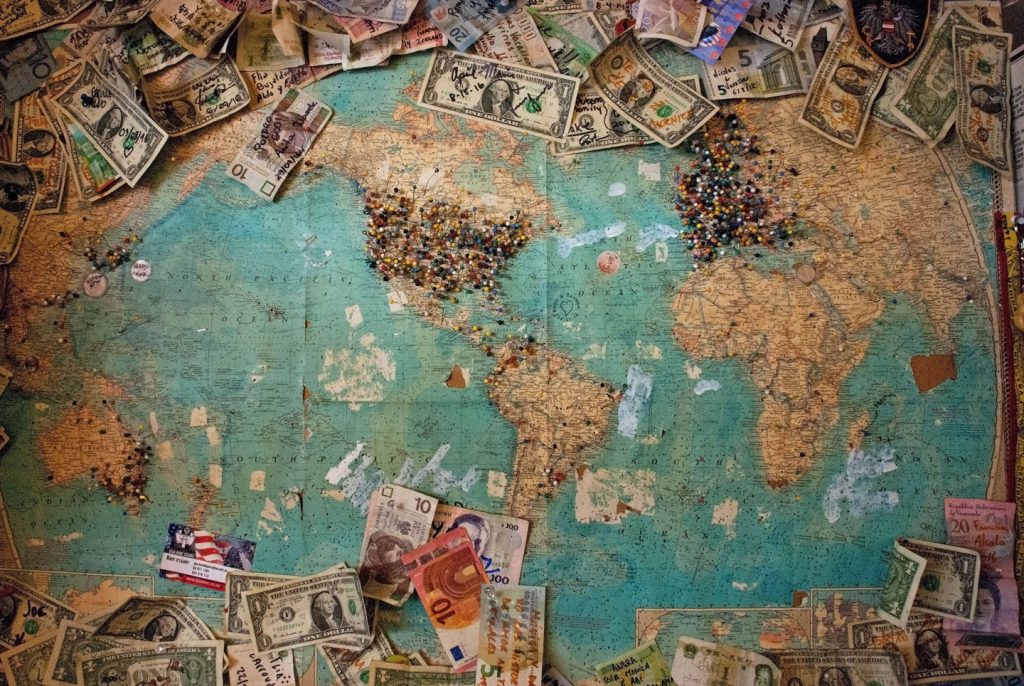Table Of Contents
The world’s major fiat currencies welcomed the New Year with a bust instead of a boom as many started 2019 with a crash felt across the foreign exchange markets.
The Japanese Yen surged to levels reminiscent of its movement 10 years ago which led to the collapse of the Australian Dollar within 7 minutes.
Then you have bitcoin which has seen more ups and downs than a roller coaster at Magic Mountain.
The collapse of the fiat currency markets is not entirely unprecedented as volatility is a characteristic of forex trading. The end result of such volatility however, is hyperinflation.
Currency prices are subject to the laws of supply and demand. Participants in the foreign exchange market – the traders, fund managers, and speculators – assess the risk level of a currency based on certain key indicators.
Among these key indicators are economic and political stability, investor and consumer confidence, and data on the performance of the economy. In crypto, interested investors should first study the history of its currency market movements to have a better understanding of its volatility.
The United States Dollar
The Bretton-Woods Agreement in 1944 initiated the ascent of the United States Dollar as the world’s reserve currency. The U.S. Dollar strengthened its position as the world’s reserve currency when former U.S President Richard M. Nixon set aside the gold standard.

Before the U.S. Dollar assumed its role as the reserve currency of the world, that position was held by the British Pound Sterling. In the past few years, the Japanese Yen and the Euro have become popular reserve currencies because of their growing but stable economies.
Mark Carney, governor of the Bank of England, views China’s RMB or Renminbi to become a dominant reserve currency in the years ahead.
It is important for the U.S. Dollar to remain strong because it makes the cost of imports cheaper and helps manage inflation rates.
The Venezuelan Bolivar
The Venezuelan Bolivar has been in the news throughout 2019. Its collapse has led to tremendous hyperinflation resulting in massive poverty and migration. The roots of the currency’s downfall originated during the time of former President Hugo Chavez.
In 2010, Chavez addressed the growing shortages of supplies in Venezuela by declaring an “economic war”. The situation has gotten worse under President Nicolas Maduro no doubt exacerbated by the drop in oil prices in 2015. The tragedy of it all is that Venezuela sits on top of the world’s biggest reserve of oil.

U.S. President Donald Trump put more political and economic pressure on Maduro by enacting policies that prohibited new transactions with the Venezuelan government.
Maduro responded by creating a digital currency called the “Petro” which was to be used for oil transactions.
The Republic of Zimbabwe
Political and economic stability began taking its toll on the Republic of Zimbabwe in the 1990s. The level of hyperinflation hit its peak in 2008 which led to the government to abandon its own currency.
It was estimated that by mid-November 2009, Zimbabwe’s inflation rate hit 79,600,000,000%. To put this in perspective, US$1 had the value of Z$2,621,984,228.
The Argentinian Peso
After the OPEC imposed the oil embargo during the 1970s, Argentina’s economy which had been growing started to collapse. The country was wracked with acts of political and civil unrest. The situation was made worse after the country realized trade and budget deficits.
In a last-ditch effort to save the economy, Argentina started printing money. Unfortunately, the worst was yet to come as a 1976 military uprising and uncontrolled money supply greatly contributed to the decline of the economy.
In 1982, Argentina’s GDP dropped 12% on a year on year basis. It was the worse situation for Argentina, Latin America’s 3rd largest economy, since the “Great Depression”.
The Icelandic Krona
The Icelandic financial crisis took place during the period of 2008 and 2011. In 2008, the 3 largest banks of Iceland – Landsbanki, Glitnir Bank, and Kaupthing Bank – were nationalized.
However, these banks defaulted on foreign debt amounting to $62 Billion. The incident made investors lose trust in the Icelandic banks and in 2008 triggered a massive depreciation of the currency.
The Turkish Lira
The Turkish Lira continues to struggle mightily versus the United States Dollar and hit its all-time low in 2018. As the currency woes get worse, it adds more pressure to its burgeoning debt payable to a number of countries.
A quick read-through many of the Internet financial website reveals a number of people revelling at the ongoing fall of bitcoin and the crypto-currency market. However, just like the foreign exchange currency market, boom and bust cycles are nothing new.
A fixed supply currency like bitcoin will not trigger hyperinflation and it is nearly impossible to have a total devaluation of a crypto-currency. If you are currently an investor in bitcoin, you should have the confidence to hold on a bit longer.
